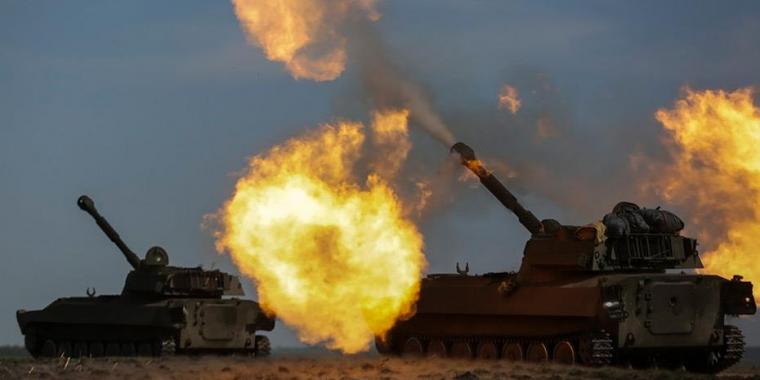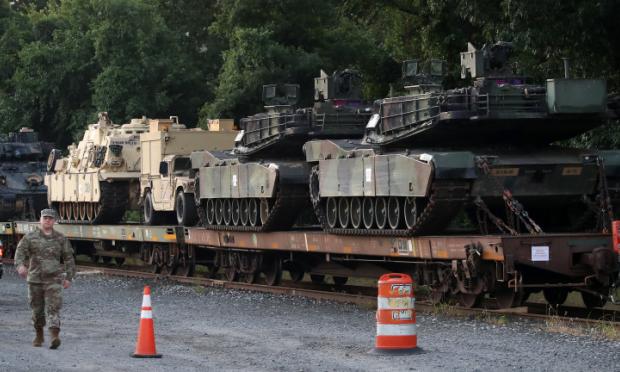As part of the rotational formation by the United States Army, military equipment of the United States of America ground forces - "Abrams" tanks and "Bradley" combat vehicles - were transferred to Greece and specifically to Alexandroupoli, to be forwarded whenever required in Ukraine .
"They left Bulgaria through the 'Captain Petko Chelnik' border checkpoint at 4:50 pm." , according to the Department of Defense.
As the anniversary of Russia's invasion of Ukraine approaches, US and French troops part of a NATO battle group in Romania are conducting a military exercise to test the defenses of the 30-nation alliance's eastern flank.
The Eagle Royal 23 joint combat exercise, at the Black Sea Training Range in Capu Midia, involves around 350 soldiers from multinational battle groups who will practice firing live ammunition.
Romania's defense ministry said the aim of the drills is to test the "interoperability of NATO artillery systems" in a hypothetical Article 5 collective defense scenario in the alliance's southeastern territory.
Article 5 of NATO is central to its founding treaty. The clause requires each member of the alliance to come to the aid of any ally who requests it. Article 5 has only been invoked once: by the US after the 9/11 terrorist attacks in 2001.

NATO exercises with live fire
About 350 soldiers with 60 vehicles from the French NATO coordination team, the Tactical Missile Brigade A.I. Cuza and the US Army Airborne Division conduct live-fire exercise Eagle Royal 23 in Capu Midia (Constanta County), southeastern Romania. This was announced on Tuesday by the press service of the Romanian Ministry of Defense.
The objective of the Eagle Royal exercise is to test the interaction of artillery systems, as part of NATO's collective defense operation under a hypothetical scenario based on Article 5 (Washington Collective Security Treaty), in the southeastern flank of the alliance.
At the extraordinary NATO Summit in Brussels in 2022, the Allied Heads of State and Government agreed to establish four more multinational battle groups in Bulgaria, Hungary, Romania and Slovakia.
The establishment of four more battle groups, along with the reinforcement of the existing four battle groups in the northeast, extended the Alliance's forward presence along NATO's eastern flank – from the Baltic Sea in the north to the Black Sea in the south – and effectively doubled the number of troops on the ground.
At the end of last month, about 600 French soldiers deployed in Romania also conducted live combat exercises to test NATO's readiness in the region. This exercise took place at a training field near the eastern Romanian city of Smardan and involved around 200 military vehicles, including four French Leclerc tanks.
In January, NATO deployed surveillance aircraft to Romania, from where they will fly missions for several weeks to monitor Russian military activity near the alliance's borders.

NATO has increased its military presence in the eastern part of the Alliance as a direct result of Russia's behavior, which reflects a pattern of aggressive actions against its neighbors and the wider transatlantic community. Russia is considered the most important and immediate threat to the security of the Allies and to peace and stability in the Euro-Atlantic area.
Following Russia's invasion of Ukraine in February 2022, the Allies sent additional ships, planes and troops to NATO territory in eastern and southeastern Europe, further strengthening the Alliance's deterrent and defensive posture.
This includes thousands of additional troops in NATO battlegroups, fighter jets to support NATO air policing missions, enhanced naval forces in the Baltic and Mediterranean Seas, increased overall troop readiness and, for the first time, deployment of the highest readiness element of the NATO Reaction Force to Romania.



